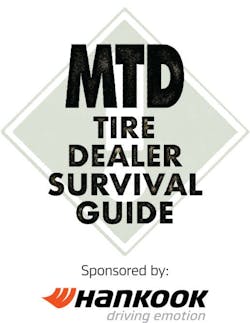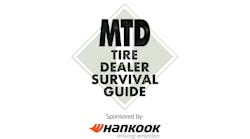Real-World Strategies for Making the Most of Your Assets
By Dennis McCarron
There are three vital documents to every business’ success. They are the income statement, the cash flow statement and the balance sheet.
The income statement’s job is to record the sales, costs, profits and expenses of doing business. The cash flow statement explains how cash comes into the company and how it goes out. The balance sheet records the company’s resources and obligations at any given moment.
Most business owners are familiar with the income statement. Fewer are familiar with the other two.
A cash flow statement is important because it tells you how well you manage generating cash, paying your debts and funding the operations of your business.
A balance sheet is important because it shows what a company owns (assets), what it owes (liabilities) and what the owner owns (equity.) Essentially, it shows how stable the company is or how much risk the company is exposed to financially.
“Inventory is an asset—not an expense” is an old adage that has stood the test of time. It’s important to revisit why.
In accounting terms, when you buy a product you intend to sell, it gets recorded on the balance sheet as a reduction in cash (asset) and inventory (asset) is increased. Your overall asset value doesn’t change, but your cash position certainly does. And cash flow is very different from net profit.
Your income statement may tell you that your company generated a net profit of $5,000 in a month. But if you need $10,000 to buy the next container of tires, you better have money in the bank or you will need to borrow money, which will increase your costs of carrying inventory.
You should be concerned with both profitability and cash flow. As a matter of fact, I would argue that cash flow is more important. Take these two scenarios into account.
John’s Tire & Automotive isn’t very busy. The company works on about nine cars a day and since its volume is relatively low, John doesn’t inventory much in the way of parts or tires. At the end of most months, John either records a loss on his P&L or a very small profit. He’s been doing this for a long time.
Albert’s Tire & Service is very busy. Its owner, Albert, is usually looking for deals so he can improve his profit and speed up the wait time/down time a vehicle sits in the air on a lift. Last month, he got very aggressive with his purchasing and realized he didn’t have enough in his bank account to cover the purchase. He asked his bank for a loan. After all, he’s the busiest shop in the town! But when the bank looked at his financial statements and in particular, his balance sheet, it declined to loan him the money. Albert already has a large loan out on his company and his current liabilities are more than his current assets.
If Albert gets to payday and doesn’t make the proper payroll requirements, he’s technically bankrupt and must shut his doors. Yet John, who almost never makes a profit, keeps his doors open all the time. Why?
The answer is cash flow. You see, cash availability must be the number one goal of any business - even over profit. Profit comes in at a close second. But you can operate a business for years without making a profit. However, if you run out of cash and miss payroll, it’s time to close the doors.
I’m not advocating an all-or-nothing approach to inventory. It’s important to have parts and tires on hand to effectively service the needs of your customers.
But like many other things in business, inventory needs to be managed properly for the business to survive and thrive. Is the right amount of inventory $5,000? Is it $50,000? Is it $500,000? There is no dollar amount that is a universal answer. However, there is a ratio. Your total inventory in any given 12-month period should “turn” or be replaced a minimum of eight times. So if you stock four tires at your dealership, over 12 months you should have sold that tire 32 times.
To be clear, this is a measurement for retail tire sales only. When factoring commercial truck, OTR and agriculture tires, the turn is much lower for a variety of reasons. But in retail, your minimum goal is eight turns. (If you are closer to a major metro area and receive multiple deliveries a day, turns should be higher.)
Why should your inventory turn at least eight times? There are several reasons.
First, faster turns convert back to cash more quickly. If you buy a tire to put into inventory, you are locking up cash as inventory until you sell that tire. If that tire sits for three months, you can’t do anything with it. One tire might not seem like a big deal, but if a large portion of your inventory only turns four times a year—that’s one turn every three months—your cash is locked up for most of the year.
If you’re converting inventory back to cash (selling the tire) almost monthly, that keeps cash flowing through your company faster, allowing you to be flexible and avoid having to go to the bank. Not holding any loans for inventory is crucial today since the interest on the loans must be put into the cost of goods and tire pricing has never been so transparent.
Turning inventory quickly will help you put more savings into your company, so if the economy weakens, another pandemic hits or there is a major shortage in tire supply, you have the cash to be flexible. Carrying a huge amount of inventory in case those things happen is like trying to time the market. Every expert will tell you that’s a bad idea. Manage your inventory. Don’t gamble with it.
Next, square footage costs money. It’s called “rent.” Running a tire store requires attention to a lot of different details and making sure every month that what you invest in either inventory, machinery or employees is done so to make profit.
If a tire machine breaks, you need to fix it quickly. Otherwise, you won’t be selling a lot of tires. If an employee routinely doesn’t show up for work on time, you would fire that employee and hire a better one. Well, the same goes for inventory. Maintaining a store costs owners money, regardless of any sales having been made. The rent is always due.
Whether you have a 10,000- or a 20,000-square-foot shop, every inch needs to be trying to make cash. Your people need to work, your machines need to work and your inventory needs to work. And inventory works by moving in and out frequently. If inventory just sits around, it’s like still having a bubble balancer in the corner of your shop. (You did get rid of that old bubble balancer, right?)
Finally, tires have expiration dates. Many manufacturers and distributors have tight controls on tire returns. I know there’s been much debate on when and under what conditions, but it’s indisputable that when a tire “ages out,” you can’t sell it anymore. Usually after just a few months, you can’t return it, either.
Dead inventory not only hurts cash flow, but it also kills gross profit when you have to write it off and junk it. When any product has an expiration date, inventory turns are of an even greater importance.
So how do you know what inventory to keep? The simple answer is to look at what you have sold over the last year and divide that by eight. This is what your on-hand inventory should be. If the number isn’t high enough to divide or the answer is below three, you should strongly consider eliminating slow movers.
At this point, you might be thinking about SKU proliferation. And it’s true that some dealers will have six or seven options of the same size tire. You should keep your options open as supplemental inventory, instead of having all brands in all sizes. Supplemental inventory is where if one particular tire is out of stock, you can switch to a comparable brand. This is more common in lower-tier tires.
Also remember that only using historical data to drive your inventory levels is not advisable. And it’s important to have some aspect of predictive inventory. Trends change. People buy new cars.
It certainly wouldn’t hurt to contact your state’s Department of Motor Vehicle Services or a marketing company that can acquire data on the make and model of registered vehicles within a certain radius of your store—using a smaller radius if you’re in a major metro area and a larger radius if you’re in a suburban or rural area.
Typically, if you’re in a major metro market, you’ll want to focus on closer to a three-mile radius, while the target radius of a very rural tire dealership could be as wide as 50 miles.
The information you gain will tell you what people are driving and will give you a good sense of what their upcoming tire needs will be. Figuring out how much to stock from this data is a blend of art and science, so I would start in a conservative way.
Not everyone in your dealership’s radius is going to be buying tires from you nor will need new tires within the next 12 months. The data you gather should only influence your stocking levels—not dictate it.
Additionally, you should stay current on new and used car sales data. Look at what was popular two or three years ago and you can bet many of those vehicles will be needing new sneakers soon. Again, this information should only influence your inventory levels.
Finally, do not forget about any business-to-business accounts you may have. If you land a post office account or a fleet of plumbing company vans, you will have to be ready to service those companies’ tire needs in due time. A quick yard inspection—going to where the vehicles are parked and noting common tire sizes and conditions—will help guide you in the right direction when it comes to future tire needs.
Remember, inventory is a critical asset. While inventories, in general, are lower than they used to be 10 or 20 years ago, we are not yet—nor will be in the near future—operating in a completely just-in-time environment.
Having two deliveries a day is certainly better than two deliveries a week, but nothing beats having some inventory on-hand. You just need to balance the convenience of on-hand inventory with managing cash flow. And be mindful that stale inventory not only hurts cash flow, but can become a profitability problem, as well.
To learn more about Hankook, click here.
Dennis McCarron is a partner at Cardinal Brokers, one of the leading brokers in the tire and automotive industry (www.cardinalbrokers.com). To contact McCarron, email him at [email protected].
This article is part of the MTD Tire Dealer Survival Guide series. As more articles are released, they can be found below:
Technician Compensation—How To Stay Competitive
How To Make the Most of Every Phone Call



